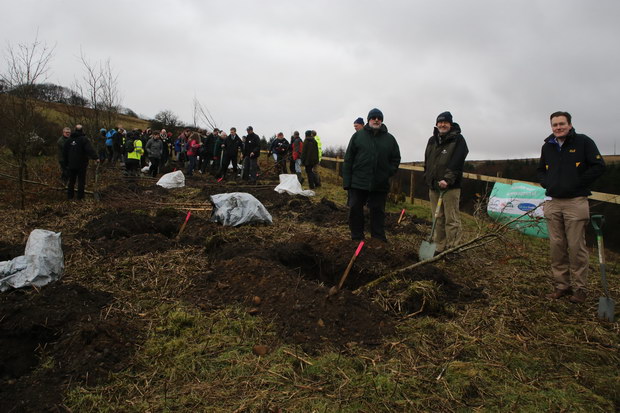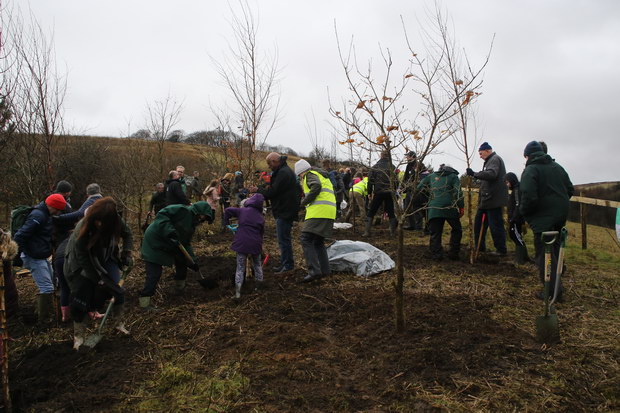
2B was one-quarter of the HEYwoods (2022 update - now known as Humber Forest) delegation, invited by the Woodland Trust to join the other community forests - White Rose, City of Trees and Mersey Forest). Also present were the Forestry Commission, Heritage Lottery Fund and local and national politicians, including Thérèse Coffey MP, Parliamentary Under Secretary of State for the Environment - and a group of enthusiastic schoolchildren, one per tree.

Getting ready to plant
So, having had the symbolically important inaugural event, the task ahead for HEYwoods (2022 update - now known as Humber Forest) is to find ways to replant an area which has the lowest tree cover in the UK, at around 3%. East Riding’s landscape is dominated by intensive agriculture, whether in the Vale of York, up on the Wolds, or on the Holderness plain to the east.
The major urban areas, Hull and Beverley, have tightly constrained boundaries and limited plantable land. But perhaps East Yorkshire’s forest will be an agricultural forest, based on hedgerow trees and field corners. In the face of Ash Dieback and climate change, we also need a major push to make our existing woodlands more resilient. And our urban areas will need trees more than ever, to help offset the growing impacts of droughts and flooding.

The first fifteen (of fifty million!) trees - nearly in the ground
An initial workshop is being planned to scope out the opportunities. The Northern Forest will give us a new impetus, with political backing, regional weight and a shared ambition to see real change, and all the benefits that trees can bring to our rural and urban landscapes.
By Bill Blackledge CMLI
Vice Chair of LI Technical Committee